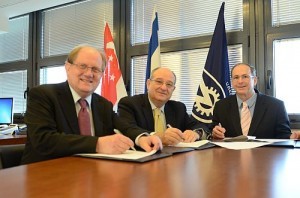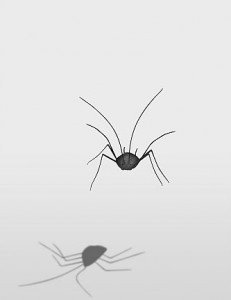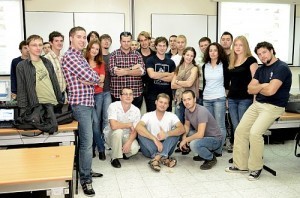“Ectodermal dysplasia” causes deficiency in skin, hair, and nails, cleft lip and palate, and cloudy corneas that can lead to blindness; seven out of every 10,000 births suffer from one form of this syndrome
Scientists from the Technion and the Paris Descartes University in France, developed an innovative approach to healing “Ectodermal Dysplasia Syndromes,” caused by a genetic mutation in the p63 gene.
“Ectodermal Dysplasia” is a group of rare syndromes that affect different areas in the body. This genetic disease causes congenital deficiencies in the skin, hair and nails, cleft lip and palate, and cloudy corneas that could lead to blindness.
In the current research, a unique cellular model was created that summarizes the major fetal deficiencies associated with this disease.
The Israeli scientist (Dr. Ruby Shalom-Feuerstein from the Ruth and Bruce Rappaport Faculty of Medicine) and his French colleagues (Professor Daniel Aberdam and Dr. Isabelle Petit from the Paris Descartes University), generated a new cellular models for the disease. They have reprogrammed cells collected from patients with these syndromes, in order to transform them into fetal stem cells carrying the mutation. In the second stage of the research, the scientists proved that as opposed to normal fetal stem cells, the fetal cells provided by patients were unable to complete fetal maturation processing of skin tissue and corneal development. Finally, due to a small chemical compound known as PRIMA-APR246, a test tube experiment showed a significant improvement in the functioning of the deficient cells.
“The research shows that the PRIMA-APR246 molecule may be able to advance the renewal of skin and corneal development in patients,” said the scientists. “This chemical compound was recently discovered as a potential drug to treat cancer and even successfully passed phases one and two of clinical testing in Sweden without anticipating adverse affects. This will make it all the more simpler for examining its effects on patients with ectodermal dysplasia.”
“Nonetheless, it is important to take precautions and wait for clinical trials that will at the first stage, check the potential effects of the drug on corneal functioning. These tests will take place in the Hopital St. Louis in Paris,” added the research team.
This study demonstrates the relevancy of the fetal stem cells in the research of genetic diseases in general, and disorders that are related to p63 in particular, and paves the way for future treatments.
“According to our assessments, seven babies from every 10,000 births are born with ectodermal dysplasia, and from these cases, the mutant gene is sometimes undetectable while in others it is the p63 gene, the very gene our research is focused on.”

 Two renowned universities, the Nanyang Technological University (NTU), Singapore, and the Technion-Israel Institute of Technology, inked an agreement on 10 February 2013 to set up a collaborative program in satellite and space research.
Two renowned universities, the Nanyang Technological University (NTU), Singapore, and the Technion-Israel Institute of Technology, inked an agreement on 10 February 2013 to set up a collaborative program in satellite and space research. A joint multidisciplinary study conducted by researchers from the University of Haifa (Dr. Moshe Gish and Professor Moshe Inbar from the Department of Evolutionary & Environmental Biology) and the Technion (Dr. Gal Ribak and Research Professor Daniel Weihs from the Faculty of Aerospace, and the Technion Autonomous Systems Program (TASP)), found that aphids (known as plant lice), which drop from the host plant as a defensive response to danger, are capable of turning themselves over in mid air to almost always land on their feet. The study, which describes the aerodynamic mechanism and the ecological significance of this phenomenon, was recently published in the Current Biology Journal.
A joint multidisciplinary study conducted by researchers from the University of Haifa (Dr. Moshe Gish and Professor Moshe Inbar from the Department of Evolutionary & Environmental Biology) and the Technion (Dr. Gal Ribak and Research Professor Daniel Weihs from the Faculty of Aerospace, and the Technion Autonomous Systems Program (TASP)), found that aphids (known as plant lice), which drop from the host plant as a defensive response to danger, are capable of turning themselves over in mid air to almost always land on their feet. The study, which describes the aerodynamic mechanism and the ecological significance of this phenomenon, was recently published in the Current Biology Journal. 37 young men and women from Russia to study information technology security at Technion
37 young men and women from Russia to study information technology security at Technion The Technion decides that a lecturer who does not meet the standards of good teaching – can no longer teach required courses
The Technion decides that a lecturer who does not meet the standards of good teaching – can no longer teach required courses